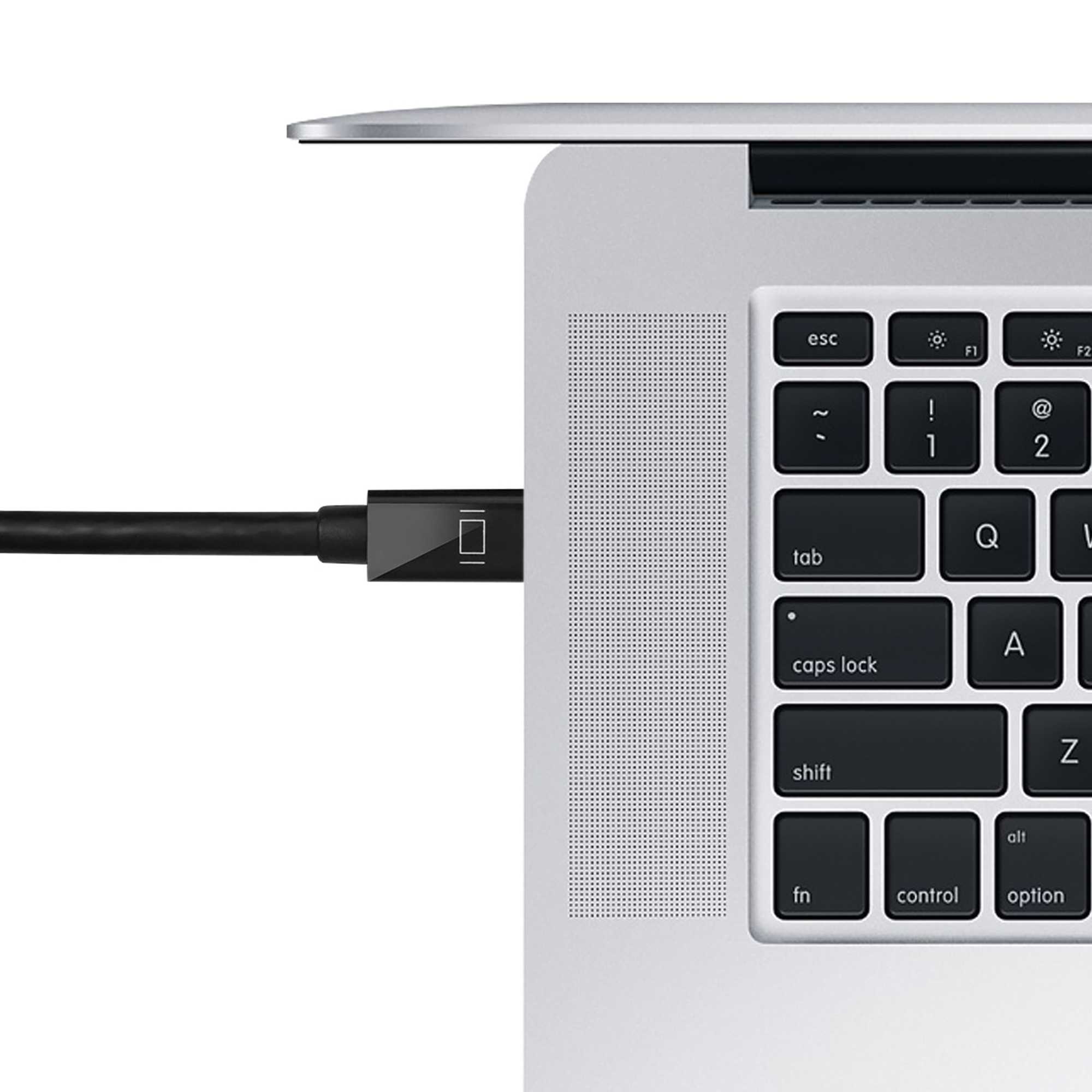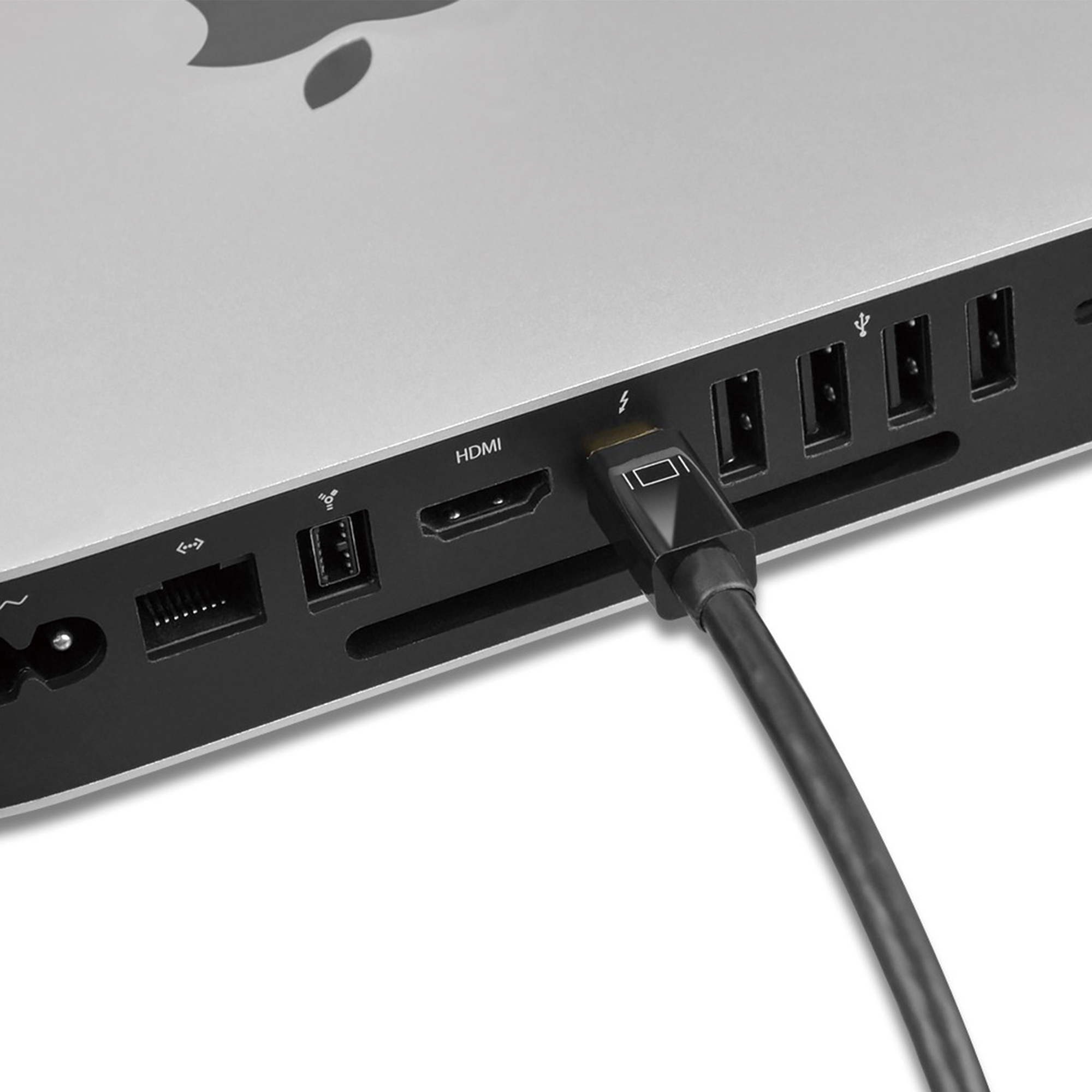- AVLAB-CB03-1
- AVLAB Mini DisplayPort to DisplayPort Cable - 2M
■ Compatible with Intel® Thunderbolt™ and DisplayPort 1.2 protocols ■ Supports high resolution displays up to 4Kx2K@60Hz ■ Support High Bit Rate 2 (HBR2) mode with bandwidth up to 21.6Gbitsec ■ Latching 20-pin DisplayPort connector provides a secure connection ■ Triple-shielding further prevents signal interference
Highlights
Compatible with Intel® Thunderbolt™
and DisplayPort 1.2 protocols
Supports high resolution displays
up to 4Kx2K@60Hz
Support High Bit Rate 2 (HBR2) mode
with bandwidth up to 21.6Gbitsec
Latching 20-pin DisplayPort connector
provides a secure connection
Triple-shielding further
prevents signal interference
Specification
Resolutions:
■ Standard (4:3 and 5:4)
■ 2048x1536, 1600x1200, 1440x900, 1280x1024, 1280x960, 1024x768, 800x600
■ Widescreen (16:9 and 16:10):
■ 3840x2160, 2560x1600, 2560x1440, 2048x1152, 1920x1200, 1920x1080, 1680x1050, 1600x900, 1366x768, 1280x768, 1280x720
Product:
■ Cable length: 6.56ft (2m)
■ Weight: 0.19 lbs
■ Color: Black
■ Cable jacket: PVC
■ Shielding: AL-Foil wrap braid, 85% min coverage
Connector:
■ 20-pin Mini DisplayPort (Male) to latching 20-pin DisplayPort (Male)
Environmental conditions:
■ Operating temperature: 32 degrees F to 113 degrees F
■ Storage temperature: 14 degrees to 149 degrees F
■ Relative humidity: 0% to 90% RH (non-condensing)
Certifications/Standards: FCC, CE, RoHS
Warranty: 1 years limited
Country of origin: China
Package Contents
■ Mini DisplayPort to DisplayPort Cable - 2M
Download
FAQ
- Q: What is USB Type-C?
- USB-C is a type of USB connector that is capable of supporting the following: ■ Data transfer speeds up to 10Gbps, if you use USB 3.1. ■ Bi-directional power delivery up to 100W, if both the USB host connection and the device support it. ■ Alternate modes, which deliver different types of data at different speeds. For example, DisplayPort Alternate Mode (DP Alt Mode). If using Thunderbolt 3 over USB-C, the connection is capable of additional features. For example, Thunderbolt 3 is capable of 40Gbps of total bandwidth. Not all USB-C ports or devices are capable of supporting all of the features listed above, or all of the features at the maximum capabilities. If you require a specific USB-C feature, your USB host connection, cables, and device must all support the feature that you require. For more information about whether your components support specific USB-C features, refer to the information provided by the manufacturers.
- Q: Does this cable/adapter require me to install drivers. Or perform any other setup tasks?
- This cable/adapter is plug and play. It does not use any drivers, and does not require any setup tasks other than plugging in the source (for example, a computer) and the destination (for example, a monitor).
- Q: The monitor is not getting a signal and the monitor says “Out of Range.” What do I do?
- The error “Out of Range” normally means that the resolution being output by the computer is not compatible with the display. Try lowering the resolution to see if that helps resolve the issue. You may need to connect another monitor or restart the computer or source to accomplish this.
- Q: What is Thunderbolt 3?
- Thunderbolt™ 3 is the latest version of the Thunderbolt standard for connecting computers and electronic devices. It is capable of the following: ■ Total bandwidth up to 40Gbps. Data transfer speeds are dependent on the other features that you are using in your setup. ■ USB 3.1 Gen 2 support. ■ 4K 60Hz video on one or two separate displays. ■ 5K 60Hz video on a single display. ■ A 10 GbE network connection between two Thunderbolt 3 compatible computers. ■ Up to six devices daisy-chained from a single Thunderbolt 3 port. ■ Alternate modes, such as DisplayPort Alternate Mode (DP Alt Mode). ■ Bi-directional power delivery up to 100W (not all Thunderbolt 3 devices support power delivery). USB-C and Thunderbolt 3 Thunderbolt 3 uses the USB-C connector, but not all host connections, cables, and devices with a USB-C connector support Thunderbolt 3. This means that a USB-C device is compatible with a Thunderbolt 3 host connection, but a Thunderbolt 3 device is not compatible with a USB-C host connection. Therefore, it is important to know whether you have a USB-C or a Thunderbolt 3 host, cable, or device.








